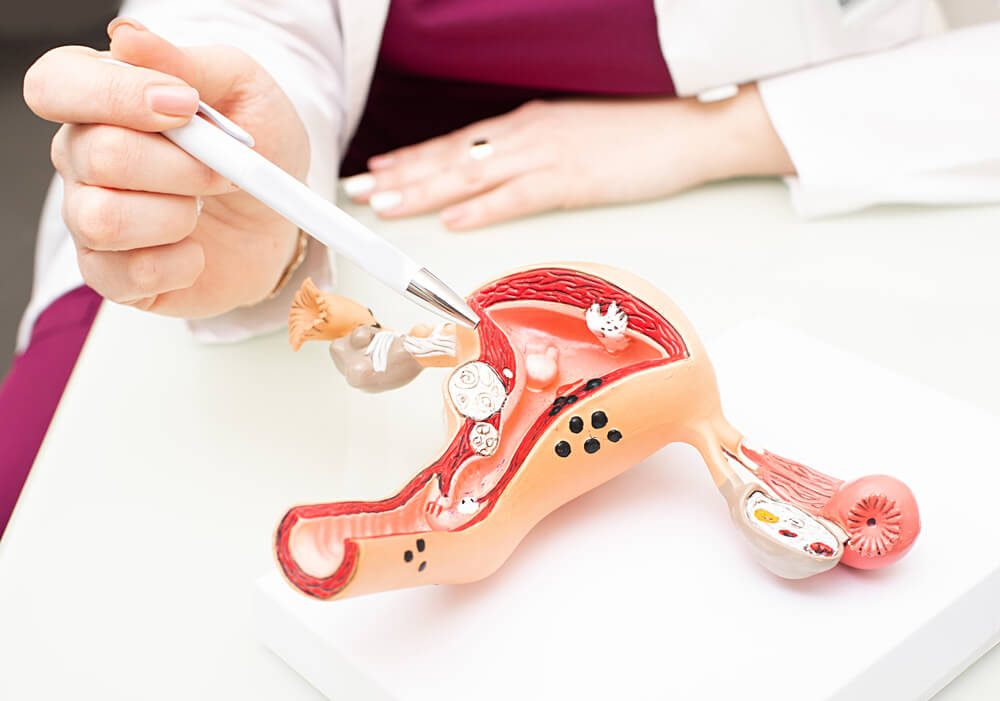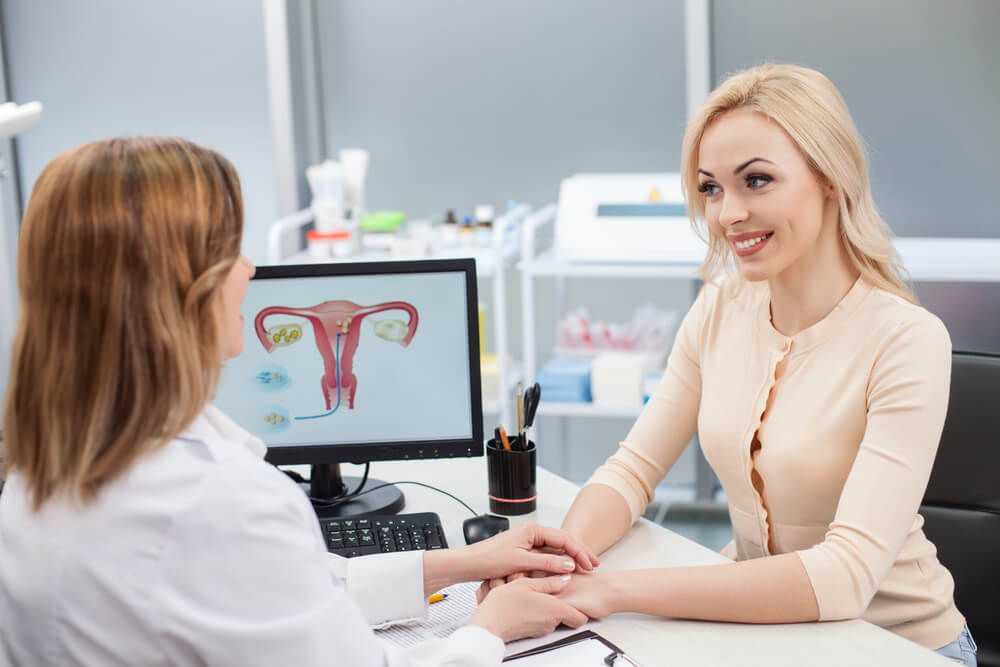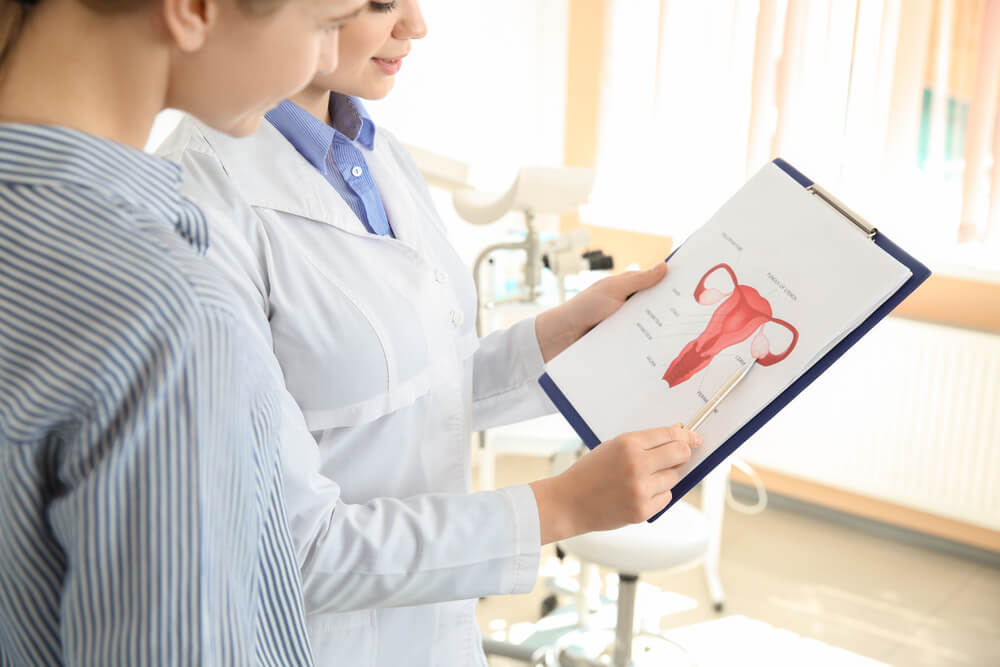Depending on the person, the position of the uterus will vary. Although many of these positions are harmless, there are some positions that can cause extreme discomfort and even stop you from becoming pregnant. This is known as retroverted uterus pain.
Read below to find out everything you need to know about retroverted uterus pain, what the normal position of uterus should be if retroverted uterus and back pain are linked, and how it impacts pregnancy.
What Is Retroverted Uterus?
A retroverted uterus occurs when the vagina isn’t vertically lined with the pelvis. Instead, it’s at an angle facing your lower back, causing the uterus to face towards the rectum. This is different from the normal position of uterus where it is tipped over directly above the bladder, and its top is facing the abdominal wall.
Roughly, one-quarter of women have a retroverted uterus and it usually doesn’t cause problems for the most part. However, there are certain situations where it does provide complications compared to the normal position of uterus, which we will discuss below.

What Are the Causes?
A retroverted uterus is a condition of which many women have either at birth due to genetics, or gain it as they age. Many women have acquired this condition after suffering from pelvic scarring. However, there is a range of other causes that may give you this condition as well. These range from:
1. Endometriosis
A common cause of this condition, scar tissue caused by endometriosis can push the uterus into a backward position, forcing it to stay there.
2. PID
PID (also known as pelvic inflammatory disease) is known to cause scarring if not treated correctly. If this is the case, this can cause a similar effect to that of Endometriosis, forcing your uterus to move to a backward position.
3. Fibroids
Those who have fibroids can suffer from the same problems as those above, with the condition creating a stuck or tipped uterus.
4. Previous Pregnancies
Those who have had pregnancies in the past could also be negatively impacted. As the ligaments to hold the uterus in the correct position could become overly stretched, this could cause a tipped uterus.
The Symptoms and Diagnosis of Retroverted Uterus
Most women that have a uterus that is retroverted shouldn’t notice any problems. Unless, there is another condition connected, such as endometriosis. If this happens, then the following problems may occur:
- Uncomfortable and sometimes painful sexual intercourse
- Extreme period pain
Retroverted Uterus and Sexual Problems
When the uterus is in this position, most will have their ovaries and fallopian tubes tipped towards the backward position as well. Therefore, when engaging in intercourse, these sensitive features may be hit by the top of the penis. When this happens, it is classed as ‘collision dyspareunia’.
If performing the woman-on-top position, because of the adverse direction of the uterus, they will feel significant discomfort and pain. There is even the possibility of ligaments that surround the uterus becoming damaged when engaging in sexual intercourse in this position.
What Are the Effects?
Those with a tipped uterus or tilted uterus may encounter many uncomfortable and painful side effects.
1. Uncomfortable Periods
A study conducted in 2013, found that those with a tilted uterus suffered more than those without. What’s more, the more retroverted the uterus was, the more painful the period became.
Scientists believe that when the uterus is at an angle, it closes off the flowing of blood from the uterus to the cervix, causing periods to be more painful.
2. Inserting a Tampon
A tilted uterus can be very uncomfortable for those who have it when inserting tampons or menstrual cups.
If this is the case, it is recommended to try a variety of different positions, or even try a menstrual disc to make it more comfortable.
Retroverted Uterus and Pregnancy
For those expecting, you’ll be happy to know that a retroverted uterus doesn’t interfere with pregnancy. This is due to the uterus in the first trimester lifting outwards of the pelvis when it expands. Thus, moving it to the normal forward tipped position.
Although, in a very small amount of cases, when the uterus is growing, it can become caught on the pelvis bone (usually the sacrum). If this happens then it is referred to as ‘incarcerated uterus’. The condition is usually identified during the 12th and 13th week of pregnancy as it causes pain and makes passing urine uncomfortable.
Patients often ask: Is retroverted uterus and back pain linked?
Due to this condition putting more pressure on the bladder and thus the back, retroverted uterus and back pain are often associated together.
How to Treat a Retroverted Uterus

Experiencing retroverted uterus pain? There are different treatments available:
Treatment for other health conditions impacting a retroverted uterus – This includes treating issues such as endometriosis and hormone therapy.
Physical exercises – After a doctor has successfully repositioned the uterus during a pelvic exam, they may recommend specific exercises to ensure it stays in the correct position. This is only recommended if it isn’t halted by other conditions such as endometriosis or fibroids.
Medical professionals aren’t always in agreement about how effective exercises are to keep the uterus in place. This is because it’s known to tip back to the original retroverted position in the long run.
Pessary treatment – a small device that is made of plastic or silicone is placed to assist the uterus to learn forward. Sometimes the device is placed permanently but usually, it’s just used temporarily.
It’s worth mentioning that there are many risks with this type of treatment. Pessary has been identified to heighten the chance of inflammation and infection. Along with, still causing sexual intercourse to be painful which may be felt by their partner as well.
Surgical options – Laparoscopic surgery is a method used to reposition the uterus over the bladder, it’s also commonly referred to as ‘keyhole’ surgery. This option is usually straightforward and provides long-lasting results. However, in the event that it fails a hysterectomy (removing the uterus) may be recommended.
Options for an incarcerated uterus – Treatments for this condition usually require hospitalization. A urinary catheter is used to empty the bladder while a variety of exercises are used to help free the uterus. One technique that is commonly used is pelvic rocking. If this type of treatment is required then the medical professional will provide further details, helping to inform patients along the way.
Get Help From a Professional
Some people have received no symptoms whatsoever associated with this condition, except suffering from painful intercourse now and then. However, if you are suffering from this condition, it is best to try out some of the treatments outlined above to ease the pain.
Looking for an experienced professional to help treat women’s health problems? Located in Hialeah, Florida, Carreras Medical Center can help. By booking an appointment today you will be able to talk to a certified professional with experience in helping ease the pain from uterus conditions.


